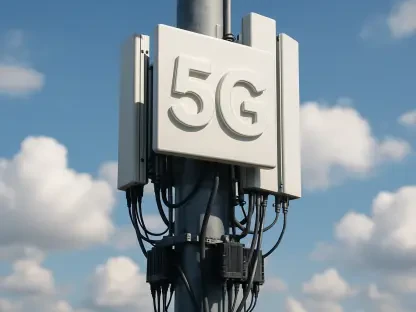In an era where the Internet underpins nearly every aspect of daily life, Internet Service Providers (ISPs) stand as the critical gatekeepers to digital connectivity, ensuring that individuals and businesses alike can access the vast resources of the online world with ease and reliability. From streaming high-definition content to enabling remote work and global communication, ISPs facilitate a myriad of activities that have become indispensable in modern society. These companies deploy an array of technologies, ranging from traditional cable systems to advanced fiber optics, to meet the diverse needs of their customers. Beyond mere access, ISPs often provide additional services that enhance user experiences, positioning themselves as integral players in the digital ecosystem. This article delves into the multifaceted role of ISPs, examining how they connect users to the Internet, the structure of their market, the technologies driving their evolution, and the societal challenges they face in ensuring equitable access for all.
The Foundation of Digital Access
The core function of ISPs lies in their ability to connect users to the Internet through a variety of technological solutions tailored to different environments and demands. Technologies such as cable, DSL, and fiber optics dominate urban areas with high-speed options, while wireless and satellite systems often serve rural or remote locations where traditional infrastructure is impractical. Subscription fees form the backbone of their revenue model, with plans varying widely to accommodate light users browsing casually as well as heavy users streaming or gaming extensively. This flexibility in pricing and service tiers ensures that a broad spectrum of consumers can find a plan that fits their needs, though disparities in availability between urban and rural areas remain a persistent issue. ISPs must balance profitability with the growing expectation of universal access, a challenge that shapes much of their operational strategy in today’s interconnected landscape.
Moreover, ISPs frequently go beyond basic connectivity by offering bundled services that add significant value for their customers. These can include email accounts, web hosting solutions, domain registration, and even proprietary software packages designed to enhance productivity or security. Such offerings transform ISPs from mere access providers into comprehensive digital partners, catering to both individual households and large enterprises. This strategy not only boosts customer retention by creating a more integrated user experience but also allows ISPs to differentiate themselves in a crowded market where competition can be fierce. As digital needs continue to evolve, these additional services reflect an adaptive approach, ensuring that ISPs remain relevant by meeting a wider array of consumer demands beyond just speed and reliability.
Navigating the ISP Market Landscape
The structure of the ISP industry reveals a complex hierarchy, with Tier 1 providers holding significant sway due to their ownership of vast infrastructure networks. Major players in the U.S., such as AT&T and Verizon, control extensive fiber optic cables and other critical resources, often dominating entire regions. This dominance can limit consumer choice, as the high cost of building and maintaining such infrastructure creates a formidable barrier for smaller competitors to enter the market. As a result, many areas are left with only a handful of options, leading to perceptions of an oligopolistic environment where a few large entities exert considerable control over pricing and service quality. This dynamic raises questions about competition and fairness, particularly in regions where alternatives are scarce.
Additionally, the concentration of market power among these top-tier ISPs often stems from historical advantages, including inherited infrastructure from past telecommunications monopolies. Such legacy benefits have allowed these giants to maintain a stronghold, even as new entrants attempt to carve out a niche. The implications for consumers are significant, as limited competition can lead to higher prices and slower innovation in service offerings. While regulatory efforts aim to address these imbalances, the reality remains that many households and businesses must navigate a landscape where their options are dictated by the presence—or absence—of these major providers. The ongoing debate around net neutrality and market regulation further complicates this scenario, as stakeholders grapple with how best to ensure a level playing field.
Technological Advancements Shaping the Future
The evolution of ISP technologies is a testament to the relentless push for faster, more reliable Internet access in response to ever-growing consumer expectations. From the early days of dial-up connections with their characteristic slow speeds and disruptive modem sounds, the industry has progressed through broadband innovations like cable and DSL to the current frontier of fiber optics and 5G networks. These advancements have dramatically improved download and upload speeds, enabling seamless streaming, gaming, and remote collaboration on a scale previously unimaginable. Major ISPs continue to invest heavily in 5G infrastructure, recognizing its potential to revolutionize connectivity with lower latency and higher capacity, particularly in densely populated urban centers where demand is highest.
Beyond conventional approaches, groundbreaking innovations are poised to disrupt the traditional ISP model and expand access to underserved areas. Satellite-based Internet services, such as those offered by pioneering projects like Starlink, utilize low-Earth orbit satellites to deliver broadband to remote regions where laying physical cables is unfeasible. This technology promises to bridge significant gaps in connectivity, offering hope to rural communities long reliant on outdated systems. While still in the early stages of widespread adoption, such initiatives highlight a shift toward alternative delivery methods that could challenge the dominance of ground-based infrastructure. As these technologies mature, they may redefine how ISPs operate, potentially fostering greater competition and accessibility on a global scale.
Addressing Societal Needs and Digital Equity
The societal importance of ISPs cannot be overstated, especially given the near-universal reliance on Internet access for education, work, and social interaction. Recent data indicates that a vast majority of U.S. adults are online, underscoring the critical role ISPs play in daily life. However, disparities persist, particularly for low-income households and rural populations who often lack access to affordable, high-speed connections. These gaps, commonly referred to as the digital divide, hinder opportunities for those affected, limiting their ability to participate fully in the digital economy. ISPs face increasing pressure to address these inequities, not only as a matter of corporate responsibility but also to meet regulatory expectations and public demand for broader access.
In response to these challenges, many ISPs have partnered with government programs to offer discounted plans and subsidies aimed at improving affordability. Initiatives like the Affordable Connectivity Program have emerged as vital tools to support vulnerable populations, ensuring that financial constraints do not equate to digital exclusion. Despite these efforts, significant hurdles remain, especially in rural areas where infrastructure costs are prohibitive, and older technologies like dial-up still linger as the only viable option for some. Tackling this issue requires a multifaceted approach, combining private investment with public policy to extend reliable, high-speed Internet to every corner of society. Only through such collaboration can the vision of truly universal access be realized.
Reflecting on Progress and Future Pathways
Looking back, the journey of ISPs reveals a landscape marked by remarkable technological strides and persistent challenges in market dynamics and accessibility. Their role as enablers of digital interaction grew from humble beginnings with basic dial-up services to a complex web of high-speed networks and diverse offerings that shape modern connectivity. The dominance of Tier 1 providers highlights structural issues that often constrain consumer options, while innovative disruptions like satellite Internet point to alternative paths that have emerged to challenge entrenched models. Efforts to close the digital divide through affordability programs also stand out as critical steps taken to address societal inequities.
Moving forward, the focus must shift to actionable strategies that build on past achievements. ISPs should prioritize expanding infrastructure in underserved regions, leveraging both traditional and novel technologies to ensure no community is left behind. Collaboration with policymakers to enhance subsidy programs can further alleviate financial barriers, while fostering competition through regulatory measures could dilute market concentration. Embracing emerging trends like 5G and satellite solutions offers a promising avenue to redefine access standards, paving the way for a more inclusive digital future where connectivity is a right, not a privilege.









